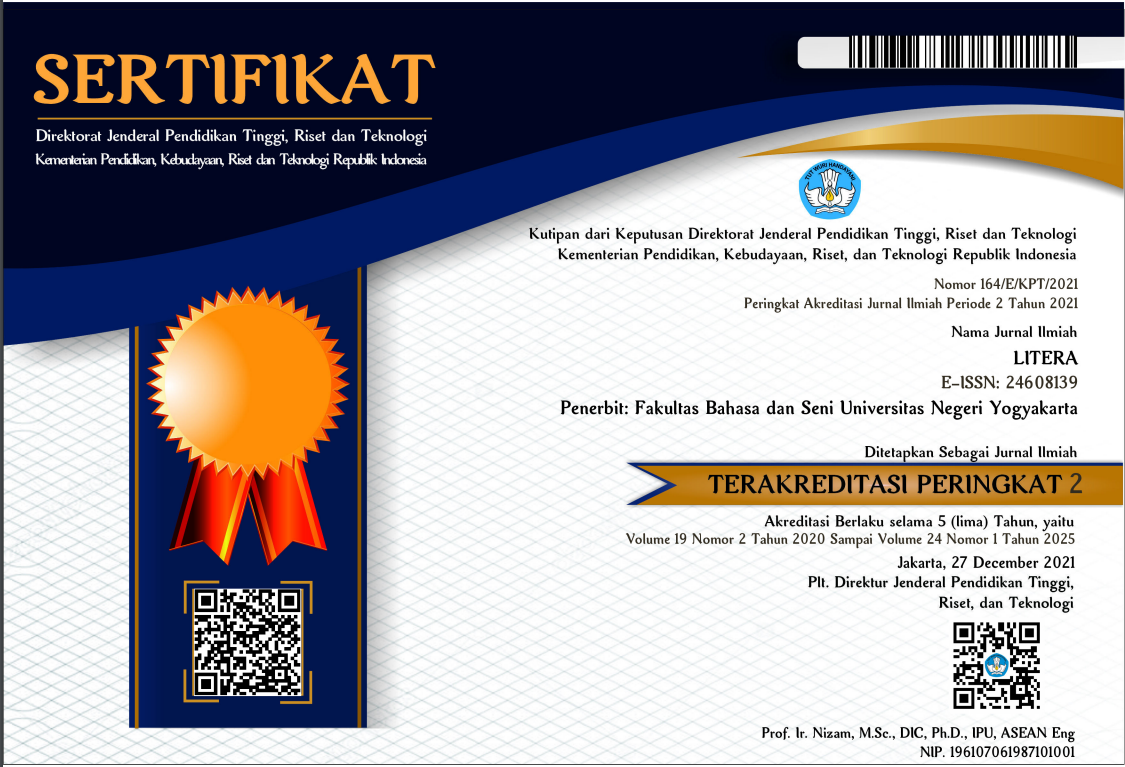VERBA TURUNAN DALAM BAHASA JAWA
Abstract
suffixes -i, -a, -en, --an, -na, -ana, and -ake/-aken, confix ka-/ -an, and combined affixes N-/ -i, N-/ -ake, N- / -a, N- / -na, N-/ -ana, di-/ -i, di- / -a, di- / -na, di- / ake, -in-/ -an, -in-/ -ake, -in-/ -ana, and -um- / -a. Derived verbs in Javanese can be both active verbs and passive verbs. They can function as subjects, predicates, objects, complements, or adverbials in sentences.
Full Text:
PDFDOI: https://doi.org/10.21831/ltr.v10i1.1173
Refbacks
- There are currently no refbacks.
______________________
__________________________________________________________________________________________________
Litera Journal is published by the Faculty of Languages, Arts, and Culture Universitas Negeri Yogyakarta in collaboration with Himpunan Sarjana Kesusasteraan Indonesia (HISKI)
The International Journal of Linguistic, Literature, and Its Teaching at http://http://journal.uny.ac.id/index.php/litera/ is licensed under a Creative Commons Attribution-ShareAlike 4.0 International License
__________________________________________________________________________________________________















